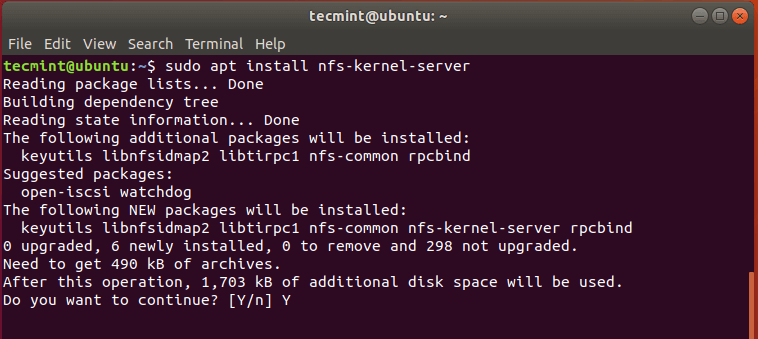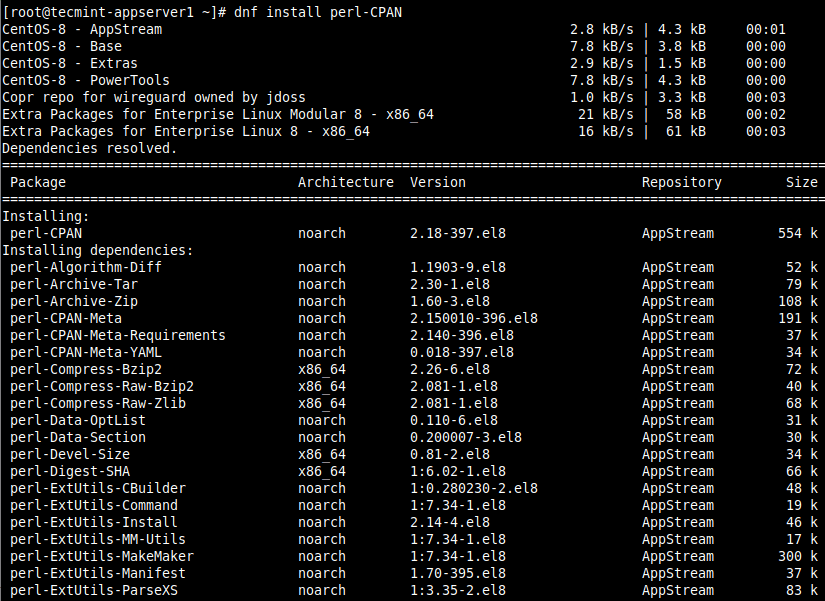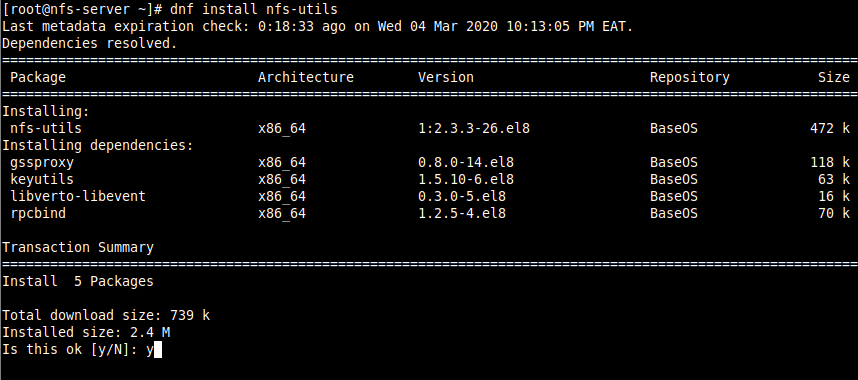Have you ever encountered the warning/error “Failed to set locale, defaulting to C.UTF-8” in CentOS 8 or RHEL 8? If yes, then this article describes how to fix this error. Note that this article should also work on any operating systems based on RHEL 8. A locale is a set of basic system parameters that
Make Linux Great Again
How to Install and Configure an NFS Server on Ubuntu 18.04
NFS (Network File Share) is a protocol that allows you to share directories and files with other Linux clients in a network. The directory to be shared is usually created on the NFS server and files added to it. The client systems mount the directory residing on the NFS server, which grants them access to
How to Install NextCloud on CentOS 8
NextCloud is an open-source, on-premise file share and collaborative platform that allows you to save your files and access them across multiple devices such as PCs, smartphones, and tablets. As a popular self-hosting platform that works much like DropBox, it allows you to seamlessly collaborate on various projects, manage your calendar, send and receive emails
How to Install Perl Modules Using CPAN on CentOS 8
The Comprehensive Perl Archive Network (CPAN in short) is a popular central repository of currently 188,714 Perl modules in 40,986 distributions. It is a single location where you can find, download and install any of the incredible (and still growing) collection of Perl libraries. It has 25,000 modules available and it is mirrored on servers
How to Set Up NFS Server and Client on CentOS 8
Network File System (NFS) also known as client/server file system is a popular, cross-platform and distributed file system protocol used to export local file systems over the network so that clients can share directories and files with others over a network and interact with them as though they are mounted locally. In CentOS/RHEL 8, the
How To Configure PostgreSQL 12 Streaming Replication in CentOS 8
PostgreSQL database supports several replication solutions to build high-availability, scalable, fault-tolerant applications, one of which is Write-Ahead Log (WAL) Shipping. This solution allows for a standby server to be implemented using file-based log shipping or streaming replication, or where possible, a combination of both approaches. With streaming replication, a standby (replication slave) database server is
How to Install Joomla on CentOS 8
Joomla is a popular free and open-source Content Management System (CMS) written in PHP. Although it’s not as popular as its counterpart WordPress, it’s still used for creating blogs/websites with limited or no web programming knowledge. It comes with a neat and intuitive web interface that is easy to use and packed with numerous add-ons
How to Install OwnCloud on Ubuntu 18.04
OwnCloud is a leading open-source file sharing and cloud collaboration platform whose services and functionalities are similar to those offered by DropBox and Google Drive. However, unlike Dropbox, OwnCloud does not have the datacenter capacity to store hosted files. Nevertheless, you can still share files such as documents, images, and videos to mention a few
Relax-and-Recover – Backup and Recover a Linux System
Relax-and-Recover (ReaR in short) is a simple yet powerful, easy-to-setup, full-featured and leading open-source bare metal disaster recovery and system migration solution, written in Bash. It is a modular and configurable framework with numerous ready-to-use workflows for common situations. ReaR creates a bootable rescue system and/or system backup in various formats. You can boot your
How to Install Joomla on Ubuntu 18.04
When it comes to creating websites, one of the easiest ways to have your site up and running is using a CMS (content management system) that usually comes with bundled PHP code and all themes and plugins you need. Apart from WordPress, the other popular CMS is Joomla. Joomla is a free and open-source CMS








